Features of growing dichondra "silvery waterfall"
Every year, new species and varieties of plants appear for personal plots. Cultivation of dichondra "silvery waterfall" is a relatively new trend in floriculture. Thanks to its attractive appearance and variety of uses, the plant conquers the hearts of flower lovers more and more.
Appearance
Dichondra "silver waterfall" is a vine of the Vyunkov family. There are about 10 varieties of this plant, the silvery variety is the most popular. Thin lashes with a silky bloom hang down in large numbers, sometimes exceeding 6 m in length. Leaves less than 3 cm in diameter, rounded, resemble silver coins. Inconspicuous flowers with a diameter of about 3 mm can be white, yellow or green.
Use in floriculture
The dichondra "silvery waterfall" has a fairly wide range of applications. Thanks to its original color, it emphasizes flowering plants well, and the long thin lashes of this vine allow you to give it almost any shape.
- In winter gardens and open areas, using dichondra, they create an imitation of a waterfall or a running stream.
- It is used to fill the void between slabs on footpaths. This is how the plant forms a wonderful silvery carpet.
- Alpine slides, verandas, fences, walls are decorated with flowers.
- They decorate loggias, balconies, terraces and gazebos, inserting pots with plants into various pots and hanging baskets.
Dichondra is grown both as an apmelite and as a ground cover plant. On the ground, the vine grows much faster and forms a dense mat. In pots, the lashes reach impressive sizes, they are cut for a more attractive look.
It is not recommended to place the flower on walls made of clay or similar materials. Scourges sprout numerous roots that can damage a building.
Reproduction methods
Dichondra can be propagated by seeds and vegetatively. The first method will help to grow a large number of young specimens. It is not difficult, but it takes a lot of time. Reproduction by the second method will be faster, because the stems of the plant take root very easily. In addition, in this case, the processes acquire a decorative appearance in a short time.
How and when to sow correctly?
In January or February, seedlings are sown in shallow but wide containers. The seeds are placed in moistened fertile soil to a depth of no more than 5 mm, the container is covered with glass or plastic wrap. Crops are kept in a room with a temperature of about 24 degrees, they provide high humidity.
Young green shoots appear in about a week. They are gradually accustomed to fresh air, ventilated, and reduced humidity. The glass or film is removed, and the containers with seedlings are transferred to a bright place, observing the same temperature regime.
After the appearance of 2-3 true leaves, the seedlings need to be cut open. Usually, several copies of dichondra are placed in one pot. Young flowers grow slowly. After warming, they are gradually tempered, leaving them outside for longer and longer. It will take more than three months for the plant to take on a decorative look.
Dichondra can be sown directly into open ground. Do it in spring or autumn. Prepare the site in advance: dig up, remove weeds and moisten. You need about 10 g of seeds per square meter of land. They are sown and trampled down a little.The soil is regularly moistened and fertilized with nitrogen-based dressings.
When sowing in winter, it is necessary to choose the right time for work. If this is done too early, the young sprouts will hatch in the fall and may freeze.
Propagation by stem cuttings
Vine scourges very easily take root. There are several ways to propagate by branches.
- The shoots cut off during shearing are placed in small containers with fertile soil. Moisten, cover with glass or polyethylene. From time to time, the plantings are aired, and after the roots appear, the bushes are transplanted to a permanent growing place.
- A container with moist soil is placed near the growing liana. If you press a long lash to the ground in a pot, then roots will appear on it over time. The cuttings are separated from the mother liquor and placed in a new place.
- You can put cut cuttings in a container of water, so they also easily give roots.
Planting seedlings in open ground
Landing in the open air is usually carried out in late May or early June, when the daytime temperature reaches +20 degrees, and at night it will not drop below +15 degrees.
The planting scheme will depend on the peculiarities of using the vine. If it is used as a ground cover flower, then adjacent specimens are placed at a distance of about 15 cm from each other. In the case when it is planned to alternate the dichondra with other plants, the interval is increased, usually up to 40 cm between adjacent flowers. The depth of the hole is about 3 cm, the straightened roots of the plant and a third of the shoot should completely fit in it.
At first, the seedlings are monitored especially carefully: the earthen coma is not allowed to dry out and the soil is carefully loosened after watering. Until the flower adapts to life in the fresh air and does not get stronger, it is better not to place it next to other plants, especially those with a powerful root system.
Growing secrets
Dichondra "silvery waterfall" grows well in the sun. You can place the plant in partial shade, but in the absence of enough daylight, the leaves will lose their decorative appearance. It is an undemanding flower, so it is easy to achieve beautiful and healthy specimens.
- Priming.
Loamy soil with good drainage and neutral acidity is the best soil for dichondra. It is useful to add sand to fertile soil.
- Temperature conditions.
The optimum temperature for development is from +18 to +25 degrees. If the air is cooled to +10 degrees and below, the flower suffers and develops poorly.
- Watering.
This bog plant is well adapted to low humidity conditions. Watering should be abundant, but water stagnation should not be allowed. It is better to use settled water, preferably warm. The soil should be constantly slightly damp. Excessive moisture and stagnant water can rot the roots. Dichondra will appreciate spraying, especially in dry and hot weather. They spend it in the evening to prevent sunburn.
Many factors affect the amount of watering: air temperature, location of the plant, its size and planting density (if the flower grows in open ground).
- Pruning.
A regular haircut helps to form a thick and beautiful crown. After carrying out such work, the flower is updated, it becomes thicker. If you want to grow the longest vine possible, you can simply pinch the tips of the shoots. Some give the plant a circle or other shape as desired. Additionally, diseased, damaged, dry stems are removed. If the flower is transferred to the room for wintering, the long lashes are also shortened, leaving about 8 cm in length.
- Loosening.
From time to time, the soil is loosened, it is especially important to do this after watering and heavy rainfall. The work is carried out neatly, since the roots of the flower are located in the upper layer of the soil. Weeds are removed at the same time.
- Fertilizer.
During the period of vegetative growth, fertilizing is carried out with a universal fertilizer for decorative deciduous plants twice a month. No additional food is required in winter. If during the application of top dressing it gets on the leaves, they are washed with clean water so that chemical burns do not spoil the appearance of the plant.
- Pest and disease control.
Apart from the nematode, usually no one damages this resistant flower. Small worms appear at high humidity. When attacked by parasites, the damaged parts of the plant are removed and destroyed.
Rarely, whiteflies or aphids can settle on dichondra. It is necessary to treat the flower with an insecticide according to the instructions on the package.
Dichondra is very rarely sick. But the immunity of a flower can be reduced if it grows next to frequently ailing annuals.
Liana care in pots
Dichondra "silvery waterfall" is often grown in various flowerpots, containers, pots and decorative boxes. Several plants are planted in one container to increase the picturesque effect. When landing on the bottom of the container, drainage must be placed - a layer of fine gravel or expanded clay. Without it, rot-sensitive roots can deteriorate if the water is stagnant.
In the limited space of the pot, the earth dries out faster, so you will have to water the plant more often. It is necessary to transplant the flower on time as it grows, so that the health and appearance of this handsome man does not suffer.
Dichondra in the cold season
Low temperatures are detrimental to the vine, it must be protected from the cold. The process is organized depending on where the dichondra grows.
- If the flower is grown in a pot.
In this case, the plant is transferred for wintering indoors. You can place a flower in a winter garden or in a house with a temperature of +15 to +18 degrees. Choose a bright, draft-free place. At first, the vine adapts to new conditions. Dichondra does not tolerate dry air well, so you should take care of optimal humidity. Spraying is carried out regularly, and watering is reduced.
- If the plant is planted in open ground.
In cold climates, dichondra will not survive the winter, but in milder climates it can be preserved. The root system is close to the surface of the ground, so it can freeze out without shelter. To protect a flower planted in open ground from low temperatures, a layer of sawdust or foliage with a height of at least 7 cm must be placed on the planting. Work is carried out immediately before frost.
Can be stored in the basement rhizomes with a short ground part and an earthen clod. They are dug up in late autumn. In spring, young shoots with roots that appear are separated from the mother plant and planted.
Growing dichondra "silvery waterfall" is not troublesome and very beneficial. This plant will pleasantly diversify the plant world of any personal plot, surprising with its appearance.
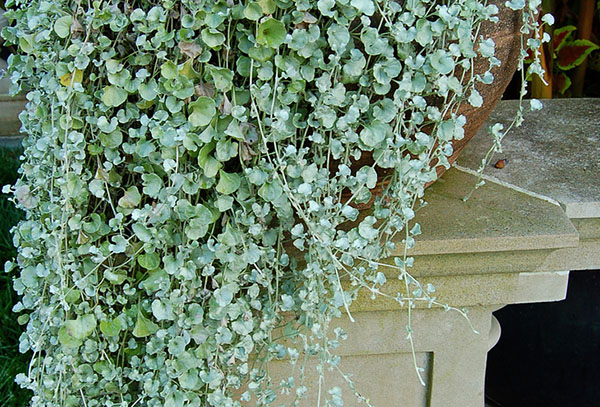
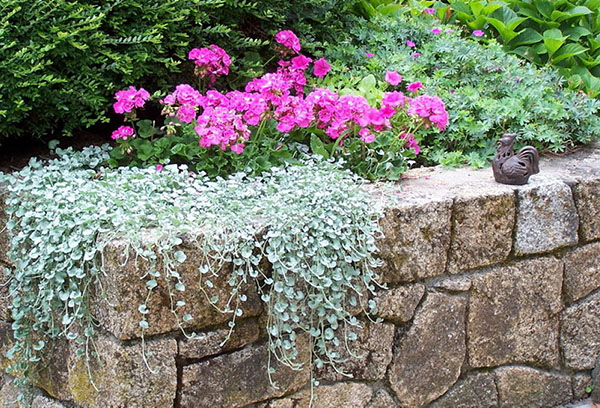
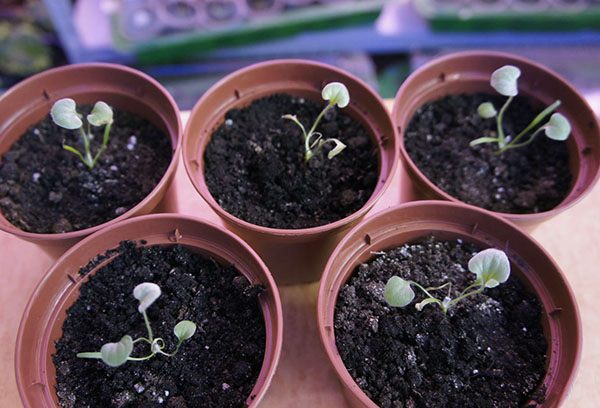
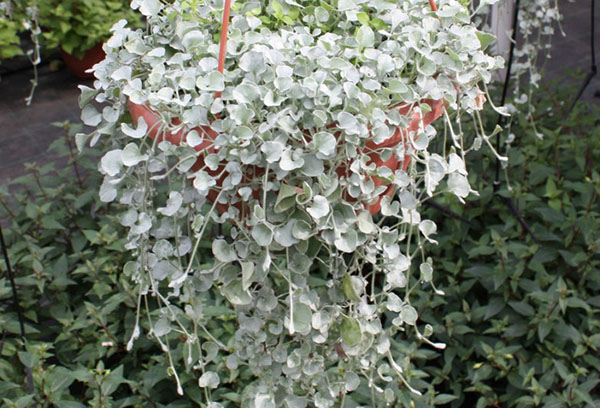
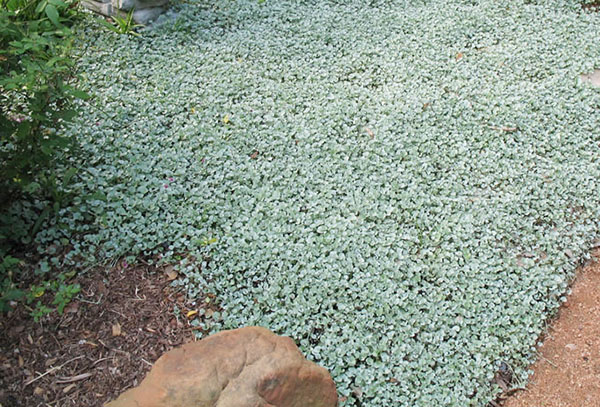

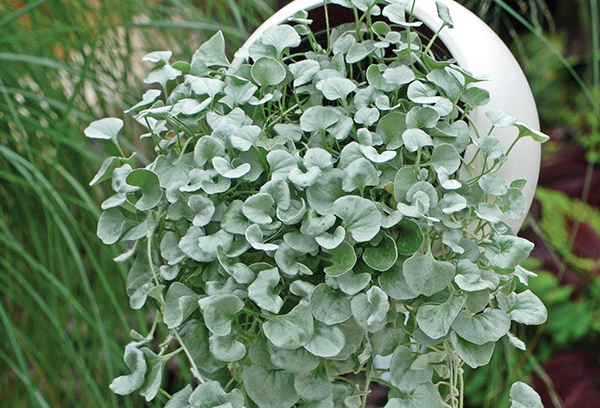

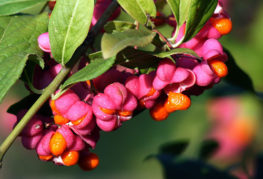
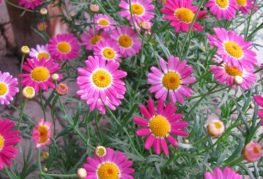
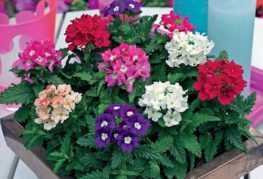
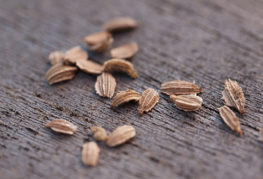
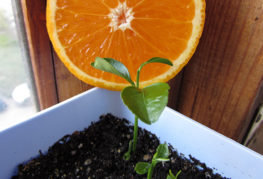
and will be published shortly.